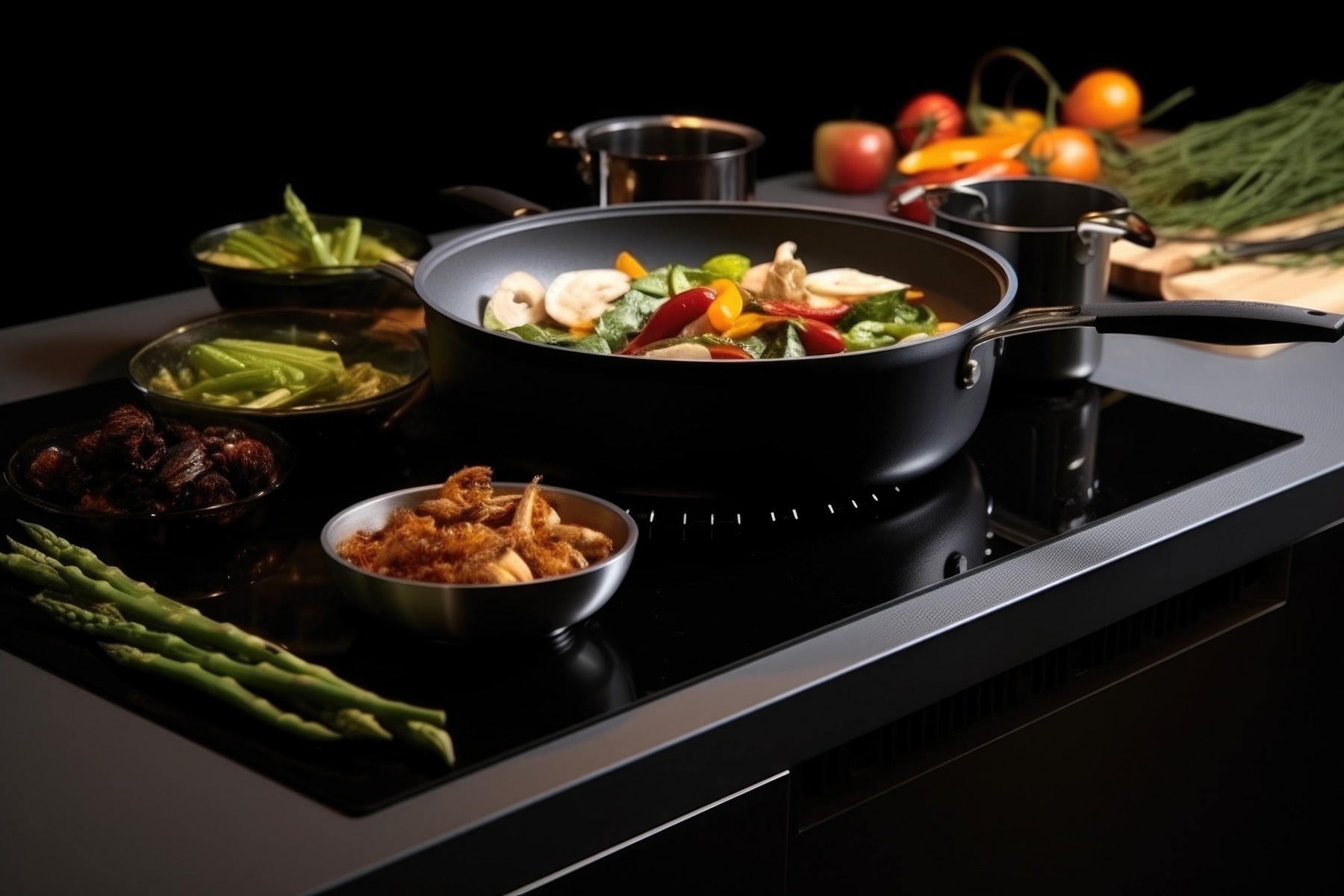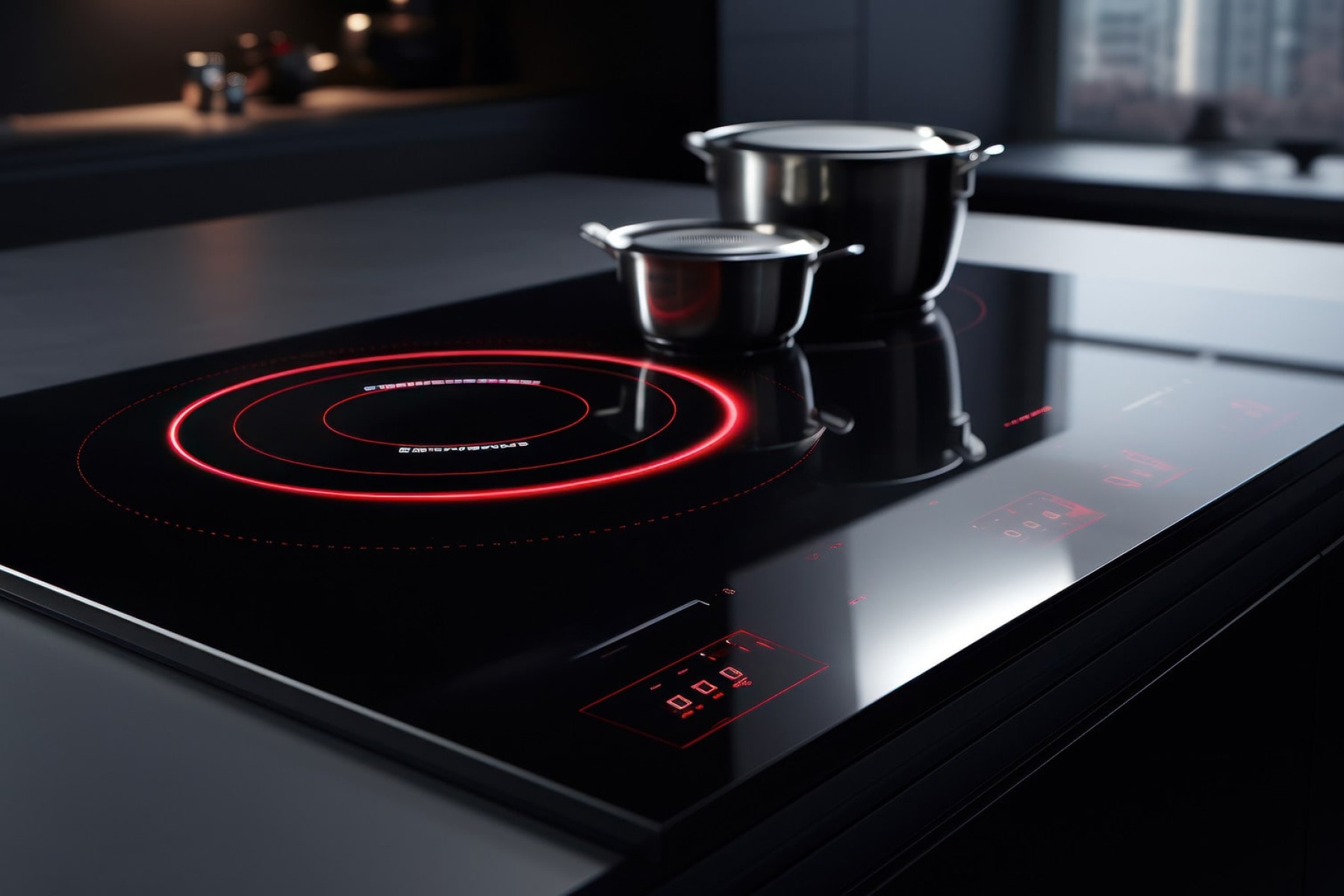Over the past few decades, the way we cook and eat has changed. The influence of cooking shows and celebrity chefs, the vast amount of recipes and cooking tips available online and the easy access to unusual ingredients have made cooking and the kitchen more central to our everyday lives than ever before.
And along with these evolving trends, kitchen appliances have also undergone changes and innovations too. Induction cooktops are a great example of this, revolutionising the way we cook. We still have traditional gas and electric stovetops, but induction cooktops have ushered in a new era of efficiency, precision, and safety.
How do Induction Cooktops Work?
At first glance, induction cooktops might look and seem like ordinary electric ceramic stovetops, but their functionality is far from conventional. The magic lies in the science of electromagnetism. Instead of relying on open flames or electric coils, induction cooktops utilise magnetic fields to generate heat directly in the cookware itself.
Here's a simplified breakdown of the process:
Magnetic Fields at Play:
When you turn on an induction cooktop, an electric current flows through a copper coil beneath the ceramic surface. This current creates a rapidly alternating magnetic field.
Reaction in Cookware (What Can You Use on Induction Cooktops):
To harness this magnetic energy, you need cookware (pots and pans) with a ferrous (iron-based) bottom, as the magnetic field induces an electric current in the metal of the cookware, generating heat. Traditional aluminum or copper-based pans won't work in this way.
Instantaneous Heat:
Unlike traditional methods that involve heating the element and then transferring that heat to the cookware, induction cooktops provide instantaneous and precise heating. The cookware becomes the source of heat, and the temperature control is incredibly responsive.
Safety First:
One of the most notable features is that the ceramic cooktop itself doesn't get hot. It's the cookware that heats up. This not only reduces the risk of burns but also makes for an easier clean-up since spills don't get baked onto a hot surface.
 Pros of Induction Cooktops:
Pros of Induction Cooktops:
Ultra Efficient:
Induction cooktops are incredibly energy-efficient. Because the heat is generated directly in the cookware, there's minimal heat loss, and cooking times are significantly reduced.
Precision Cooking:
The ability to control the temperature with great precision is a game-changer. From delicate sauces or custards that require low heat to quick searing at high temperatures, induction cooktops provide a level of control that chefs dream of.
Safety:
As mentioned earlier, the cooktop does not heat up – any residual heat will come from the pot or pan itself. This feature, combined with automatic shut-off functions, makes induction cooktops a safer option, especially in households with children.
Easy Cleanup:
Since the induction cooktop doesn't get as hot as traditional stovetops, spills and splatters are less likely to get stubbornly baked on. A simple wipe-down after cooking is usually sufficient to keep it clean.
Sleek Aesthetics:
Induction cooktops often come with a sleek, flat surface that not only looks modern but being unobtrusive are easy to integrate into most kitchen designs.
 Cons of Induction Cooktops:
Cons of Induction Cooktops:
Cookware Compatibility:
Not all cookware is compatible with induction cooktops, so what can you use on induction cooktops? Well, If your existing pots and pans aren't made of ferrous (iron) materials, you may need to invest in new pots and pans which will be an added cost you’ll need to consider.
Upfront Cost:
While prices have been decreasing over the years, induction cooktops can still be more expensive upfront compared to traditional options. However, the long-term energy savings might offset this initial investment.
Learning Curve:
For those accustomed to traditional stovetops, there will be a learning curve when transitioning to induction. When one is used to cooking a certain way to ensure a sauce doesn’t split or a gentle simmer won’t become a rapid boil, understanding the nuances of induction temperature control may take a little practice
The Conclusion: What do we think of Induction Cooktops
Induction cooktops have undeniably transformed the kitchen landscape with their magnetic magic. Their efficiency, precision, and safety features make them a compelling choice for many households. While there are some cons to consider about induction cooktops, the overall benefits far outweigh the drawbacks. As technology continues to advance, we can only expect these types of appliances to become even more refined, accessible, and affordable, making them the first choice in kitchens of home cooks and professional chefs alike.
